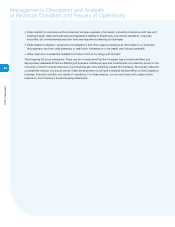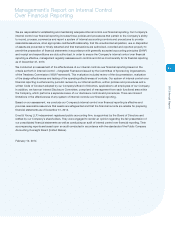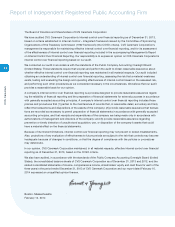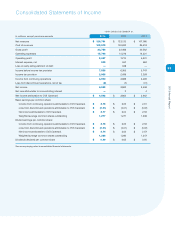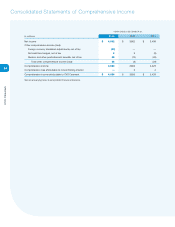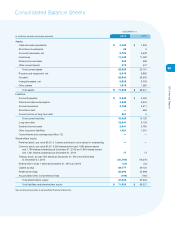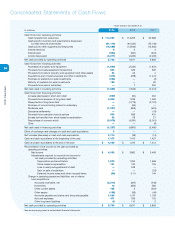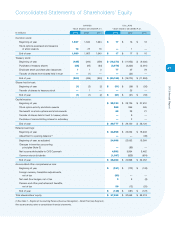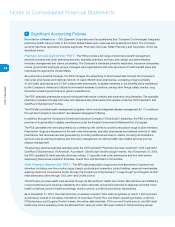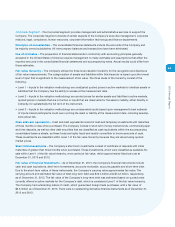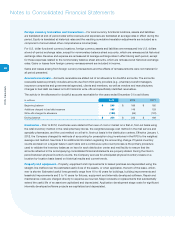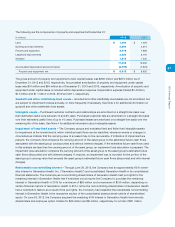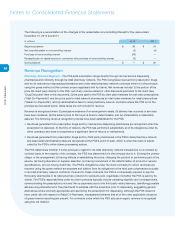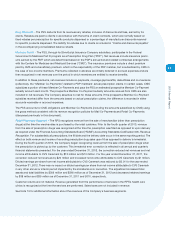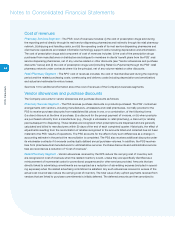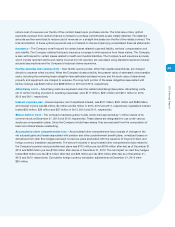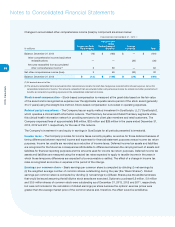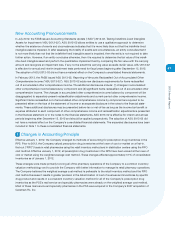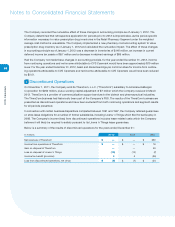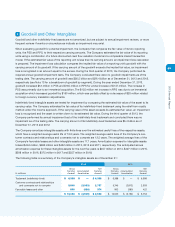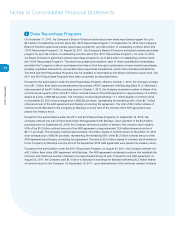CVS 2013 Annual Report Download - page 62
Download and view the complete annual report
Please find page 62 of the 2013 CVS annual report below. You can navigate through the pages in the report by either clicking on the pages listed below, or by using the keyword search tool below to find specific information within the annual report.
60
CVS Caremark
Notes to Consolidated Financial Statements
Foreign currency translation and transactions – For local currency functional locations, assets and liabilities
are translated at end-of-period rates while revenues and expenses are translated at average rates in effect during the
period. Equity is translated at historical rates and the resulting cumulative translation adjustments are included as a
component of accumulated other comprehensive income/(loss).
For U.S. dollar functional currency locations, foreign currency assets and liabilities are remeasured into U.S. dollars
at end-of-period exchange rates, except for nonmonetary balance sheet accounts, which are remeasured at historical
exchange rates. Revenue and expense are remeasured at average exchange rates in effect during each period, except
for those expenses related to the nonmonetary balance sheet amounts, which are remeasured at historical exchange
rates. Gains or losses from foreign currency remeasurement are included in income.
Gains and losses arising from foreign currency transactions and the effects of remeasurements were not material for
all period presented.
Accounts receivable – Accounts receivable are stated net of an allowance for doubtful accounts. The accounts
receivable balance primarily includes amounts due from third party providers (e.g., pharmacy benefit managers,
insurance companies and governmental agencies), clients and members, as well as vendors and manufacturers.
Charges to bad debt are based on both historical write-offs and specifically identified receivables.
The activity in the allowance for doubtful accounts receivable for the years ended December 31 is as follows:
In millions
2013 2012 2011
Beginning balance
$ 243
$ 189 $ 182
Additions charged to bad debt expense
195
149 129
Write-offs charged to allowance
(182)
(95) (122)
Ending balance
$ 256
$ 243 $ 189
Inventories – Prior to 2012, inventories were stated at the lower of cost or market on a first-in, first-out basis using
the retail inventory method in the retail pharmacy stores, the weighted average cost method in the mail service and
specialty pharmacies, and the cost method on a first-in, first-out basis in the distribution centers. Effective January 1,
2012, the Company changed its methods of accounting for prescription drug inventories in the RPS to the weighted
average cost method. See Note 2 for additional information regarding the accounting change. Physical inventory
counts are taken on a regular basis in each store and a continuous cycle count process is the primary procedure
used to validate the inventory balances on hand in each distribution center and mail facility to ensure that the
amounts reflected in the accompanying consolidated financial statements are properly stated. During the interim
period between physical inventory counts, the Company accrues for anticipated physical inventory losses on a
location-by-location basis based on historical results and current trends.
Property and equipment – Property, equipment and improvements to leased premises are depreciated using the
straight-line method over the estimated useful lives of the assets, or when applicable, the term of the lease, which-
ever is shorter. Estimated useful lives generally range from 10 to 40 years for buildings, building improvements and
leasehold improvements and 3 to 10 years for fixtures, equipment and internally developed software. Repair and
maintenance costs are charged directly to expense as incurred. Major renewals or replacements that substantially
extend the useful life of an asset are capitalized and depreciated. Application development stage costs for significant
internally developed software projects are capitalized and depreciated.


